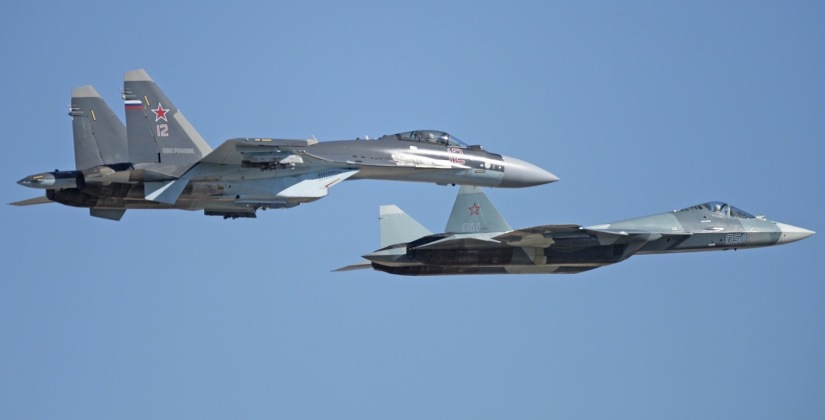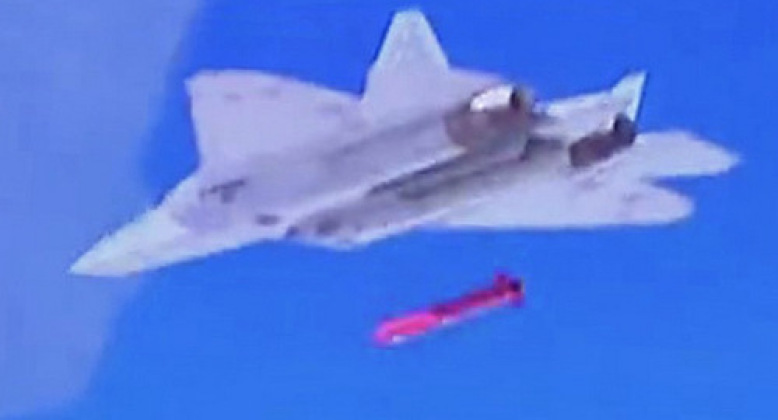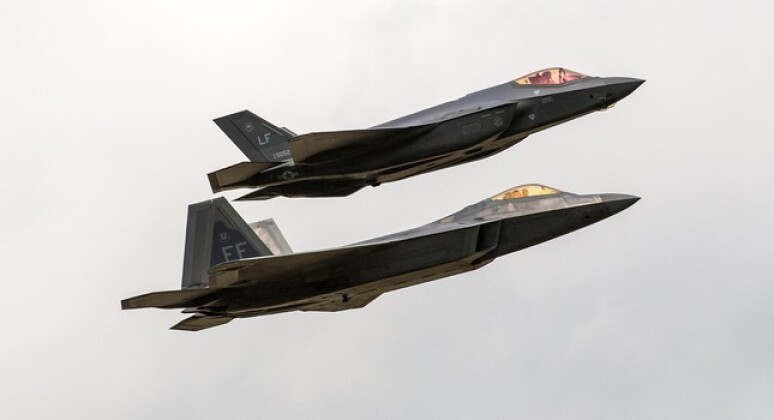News
How Russia’s New Su-57 Fighter Avoided the Lifetime Cost Trap That Crippled the F-22 and F-35 Programs
The Russian Su-57 Felon fifth generation fighter has suffered multiple delays in its development, and while the first squadron was initially expected to be formed in 2015, with 200 fighter set to be operational in the country by 2025 and over 100 more built for export, the program has fallen far behind schedule with only ten in service today and only 76 expected to be operational by 2028. The fighter is nevertheless expected to see production expanded beyond the scales of any current Russian fighter classes in order to meet the requirements not only of the Russian Air Force, which faces fast growing deployments of NATO fifth generation fighters across its borders, but also of major clients most notably Algeria and India which are expected to acquire Su-57s in significant numbers. The Felon was developed as a direct successor to the Soviet Su-27 Flanker heavyweight air superiority fighter which became operational in 1984, and which alongside its various derivatives is currently operated by 19 countries – 16 of which imported the aircraft from Russia. This provides the Su-57 with a very wide client base globally, with a particularly high interest shown by countries in the Middle East and Southeast Asia.

Although lagging in stealth capabilities relative to its American and Chinese counterparts, the Su-57 has strong performance advantages in a wide range of areas. These range from its endurance and manoeuvrability, to its engagement range and sensors – with six radars and an IRST providing a very high level of situational awareness and electronic warfare potency while L-band AESA radars provide a potential capability against stealth targets. The fighter is also the only one from its generation to have been deployed for high intensity combat against a state actor, with operations in Ukraine involving not only air to surface strikes, but also far more complex operations including suppression of Ukrainian air defences and reportedly even air to air combat at beyond visual ranges. As the Su-57 is expected to continue combat operations against Ukrainian forces and their growing quantities of NATO supplied hardware for the foreseeable future, this is expected to allow Russia to refine the design further which could potentially increase its attractiveness on global markets. There has also been speculation that should Ukraine receive F-16 fighters from NATO members, which are by far the most widely used fighter class in the West, the Russian Air Force may make a point of using the Su-57 to destroy the aircraft to further bolster its reputation. The next generation aircraft is capable of safely engaging F-16s from far beyond their range for retaliation.

Although the Su-57 boasts a range of features not seen on other fighters from its generation, one of the most significant appeals is likely to remain its lifetime cost. The fighter is estimated to be by far the least expensive in the fifth generation to procure, with a flyaway cost estimated at approximately half that of its more ambitious Soviet predecessor the MiG 1.42, and less than half that of its much lighter single engine American rival the F-35. At around $35 million per aircraft, depending on rouble exchange rates, this makes it highly affordable for acquisitions on a large scale – although this price does not include the cost of fuel, training, weaponry, spare parts and maintenance infrastructure. More significant, however, is the fact that the Su-57’s lifetime costs are reportedly comparable to those of the Flanker, which makes replacement of fourth generation fighters one-for-one with their fifth generation successors potentially highly viable. One important facilitator of this is the integration of the new Saturn 30 engines, which have lower maintenance needs and operational costs than the preceding AL-31 and AL-41 which powered the Flanker. Another is the use of innovative solutions such as radar absorbent fibreglass to avoid the need for special coatings to be applied as is done on American fighters.

Although the American F-22 and F-35 which by some estimates cost in the range of 60-100 percent more to fly per hour as their fourth generation predecessors the F-15 and F-16, meaning a transition to the fifth generation required both a contraction of the fleet and significant increases in funding, transitioning from the Flanker to the Su-57 remains highly affordable. The F-22’s lifetime operational costs, for example, are estimated at over $800 million excluding upgrades, of which flyaway costs account for only around $140 million, with extreme maintenance needs having been an important factor leading the Air Force to cancel the large majority of production and begin retiring the airframes decades early. By contrast, for operators of older Flanker airframes such as Su-27s built before the turn of the century, the higher operational costs of these old models, which has only increased with wear over decades, could make Su-57 purchases a cost saving option due to the savings on operational costs. Indeed, this is even moreso the case for the Algerian Air Force where Su-57s are expected to first replace not Flankers, but rather MiG-25s, which are an even older and heavier class of interceptor with some of the highest operational costs in the world. Operational cost increases also notably frequently result in lower availability rates, as seen particularly with the F-22 and F-35, where the easy to operate F-16 remains available in much higher numbers, meaning in Russia’s case the Su-57’s availability rates are likely to be easily maintained and comparable levels to the Flanker. Although the Flanker was never cheap to operate due to its sheer size, as one of the very largest and heaviest fighters in the world, avoiding an increase in operational costs and maintenance needs over it is a leading achievement of the Su-57 program and something equivalent programs overseas have consistently failed to achieve.












